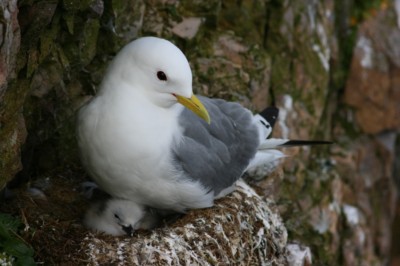Monitoring seabird breeding success
To a large degree, the number of seabirds in a colony is determined by the survival rates of adults and their reproduction (production of young) rates (and hence the later recruitment of the young to the same colony). Immigration and emigration are normally limited because the seabirds exhibit high site fidelity, that is to say, that once they have established themselves as breeding birds in a colony they will normally stay connected to that colony for the rest of their lives.

A decline in the breeding population is therefore often driven by a local decline in breeding success, adult survival, or both. Monitoring reproduction therefore gives important insight into understanding the cause of an eventual decline. Poor breeding success is often due to poor environmental conditions in the breeding area, for example little food or frequent predation of eggs and young. Monitoring breeding success can therefore reveal where and when considerable changes in the environmental conditions have occurred.
See SEAPOP’s data series for breeding-success in seabirds.
Search for data on breeding success in our data portal
Environmental changes affect breeding success
Furthermore, the birds’ survival, breeding success, or time of breeding (phenology) will respond faster and more clearly to changes in the environment than the total population size will. A colony can, e.g., remain stable for many years even if the breeding success has experienced a dramatic decline. This is because seabirds generally do not start to breed before they are at least 3-5 years old (or even 8-9 years for the northern fulmar). Therefore, the effect of several years of poor production on the population will not be traceable before as many years have passed. When the population declines, it may already be too late to determine the cause.
For most colony-breeding species, it is relatively simple to measure breeding success, and the methods for this are considered to be good. Monitoring breeding success is often combined with monitoring other parameters, and generally requires that field crews stay in the colony for large parts of the breeding season.
